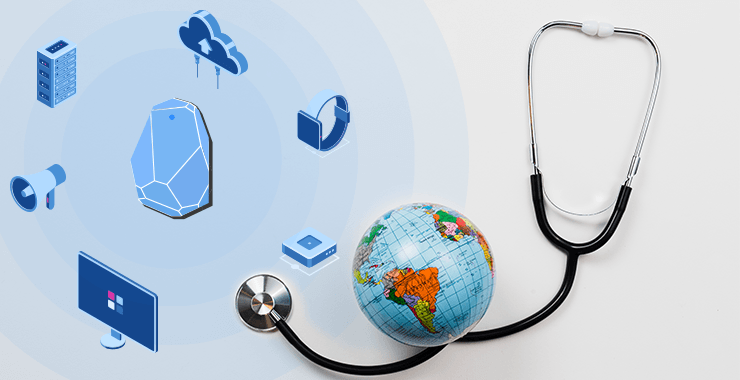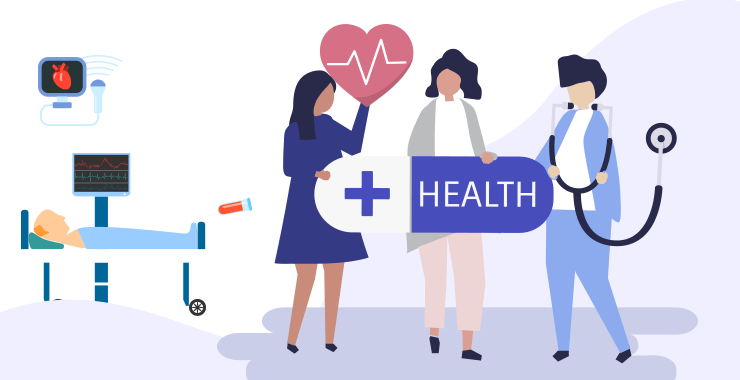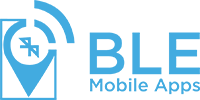How BLE Beacons are Transforming Healthcare in 2019
- by BLE Mobile Apps

According to Deloitte’s 2019 Global Health Care Outlook, The global healthcare industry is projected to reach $10 trillion by 2022 as healthcare is becoming accessible to more people around the world and life expectancy continues to climb. For the first time in history, number of people aged over 65 globally represent 11.6% of the total world population. And yes, we are winning fight against communicable diseases and eradicating malnutrition faster than ever. However, it is not all rainbows and butterflies in health economy.
Many Issues are Plaguing the Healthcare Industry
The number of patients with non-communicable diseases (NCDs) is rising in numbers. There are more people suffering from cancer, heart diseases, and diabetes than there were last year. Ironically, malnutrition and obesity are two of biggest threats to global health, according to World Health Organization. While Central Africa is at the center stage of malnutrition crisis, obesity is proving catastrophic for Americans. According to Stanford Healthcare report on ‘Effects of Obesity’, 300,000 premature deaths a year in the United States can be attributed to obesity and obesity-related health issues cost over $150 billion a year in the US alone. Obesity is the biggest cause of NCDs: heart disease, type-2 diabetes, depression, and arthritis.

Another pressing issue the healthcare industry is facing is the shortage of doctor. In the US, there are 2.6 doctors per 1000 patients. The condition is of great concern in developing and third world countries. The shortage of doctors and widespread of obesity-linked disorders are elevating cost of healthcare around the world.
Concisely; shortage of doctors, rising cost of medical care and lifestyle-induced illnesses are the three biggest threats of health economy and healthcare providers are increasingly looking at tech firms to neutralize those threats for them. Are they looking in the right direction?
The Golden Age of Health Technology
Healthcare technology sector is expected to reach USD $280 billion by 2021, at a CAGR of 15.9% between 2016–2021. Healthcare providers are employing innovative technologies and personalized programs to engage with consumers and improve the patient experience. Data interoperability, security, and ownership are moving to the forefront and health care delivery and mobility are altering everything from the site of care to who delivers care and how. We are indeed in the golden age of health technology.
A number of innovations in the field of health technology are taking place around two enablers: mobile devices and beacons. According to a Wolters Kluwer Health report, most of physicians access drug information and medical research from a mobile device. A whopping 93% of physicians believe that mHealth apps can improve patients’ health and 40% of these apps fetch information from medical equipment attached to beacon-like devices.
Research from Technavio suggests that healthcare will become emerging adopters alongside retail. In the use of beacons, healthcare’s share will grow at a faster rate than retail’s over the next four years and the market is expected to rise at a 42 percent compound annual growth rate between now and 2020. Let’s see how beacons and associated mobile apps can work in the direction of improving preventive and medical care and availability of doctors.
BLE Beacons for Doctors and Patients
While governments around the world are doing what they can to improve patients-to-doctor ratio, technology just can’t bring more doctors. However, it can raise the efficiency of the doctors on duty so that they see more patients per day. For example, a beacon can push the patient’s medical records to the treating physician’s smartphone or the service iPad over the mhealth apps. This gesture could be lifesaving if the person has certain conditions such as food allergies.
In addition, mobile and beacon technology together make way for an excellent virtual care system, where caretakers can connect to the patient at a remote location to prescribe treatment. Moreover, a beacon installed at the doctor’s cubicle can keep him updated about upcoming appointments and requests. A connected beacon on the other side can update the users waiting for their turn to see the doctor.
Beacons as a Measure for Preventive Healthcare, including Obesity
As I mentioned above, obesity is causing havoc in American healthcare economy in terms of both costs and fatalities. A US Government report shows almost 4 out of 10 Americans are morbidly obese and 7 out of 10 are overweight. Lazy lifestyles attributed to smartphones and other mobile develop have only made these situation worst. While technology can’t make people size-zero overnight, it can motivate them and keep a tab on their eating habits.
For example, Endomondo is a mobile app that encourages an active lifestyle to its users. Proactive users can subscribe to monthly fitness goals consisting of various daily tasks. The daily task could be running two KMs from your place and registering your task to the beacon installed there.
In addition, restaurants promoting healthy food can broadcast calorie counts of their food. A Subway in Charleston broadcasts the benefits of eating at Subway, showing calorie counts of their most popular subs.
Beacons and Affordable Medical Care and Elderly Care
According to a report by JAMA Network, the United States could save $175 billion in healthcare costs by cutting administrative costs to half. The rise in administrative cost could be reattributed to two biggest factors: aging and growing population and rising labor cost.
A network of beacons installed at an assisted living facility in Columbia, Ohio, reminds its residents to take their prescription and perform certain tests based on their individual medical history. The network connected to their medical history gives regular reminders to elderlies suffering from type-2 diabetes to perform regular blood sugar tests. The application associated with the beacon can push the information to the facility’s doctor for a closer examination. This saves the facility a lot in medical bills.
A beacon network inside a hospital can help reduce administrative costs by cutting the labor required. Beacons are excellent indoor navigation devices. When a patient or visitor is lost, he can ask the app installed on his phone connected to the network for directions so that nobody has to escort them to the right ward or department. Moreover; a beacon can broadcast available slots for appointments and schedule of visiting doctors, which normally would have required a person to inform a patients.
Beacon can replace many such jobs in hospital, cutting down on administrative costs.
Also Read:
Use of Bluetooth Low Energy Technology in Healthcare
Wearable Technology: Revolutionizing the Healthcare Industry


